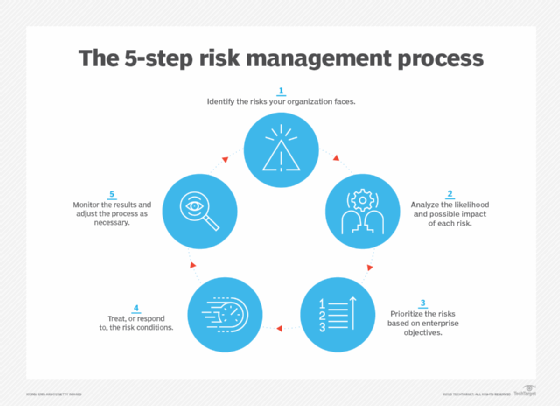Why the Importance of Risk Management Cannot Be Neglected in Today’s Modern Economy
Why the Importance of Risk Management Cannot Be Neglected in Today’s Modern Economy
Blog Article
Exploring the Significance of Risk Management for Effective Decision-Making Techniques
In the complex world of service, Risk Management arises as an essential variable in the decision-making process. The capacity to identify prospective hazards and opportunities, and strategize accordingly, can spell the difference between success and failure. With devices such as SWOT and PESTEL, organizations are furnished to make informed choices, promoting strength and adaptability in an ever-changing atmosphere. Wondering just how this functions? Let's unload the characteristics better.
Understanding the Idea of Risk Management
Risk Management, a crucial element in decision-making, is typically misunderstood or oversimplified. Risk Management entails self-displined and structured methods, utilizing information and insightful analyses. From monetary unpredictabilities, legal liabilities, tactical Management mistakes, to crashes and natural catastrophes, it addresses different dangers - importance of risk management.
The Role of Risk Management in Decision-Making Processes
In the realm of calculated planning and business procedures, Risk Management plays an important function in decision-making processes. It assists in identifying prospective hazards and uncertainties that could impact the achievement of organization objectives. By tracing these dangers, business can create strategies to alleviate their influence, guaranteeing organization continuity and stability. Risk Management therefore comes to be a vital tool in decision-making, assisting leaders to make educated selections based upon an extensive understanding of the dangers included. It encourages a positive technique, making it possible for organizations to prepare and prepare for for possible future scenarios. This significantly minimizes the chance of negative effects, promoting a lot more efficient and effective decision-making techniques. Risk Management offers as a crucial element in the decision-making processes of any organization.

Just How Risk Management Boosts Strategic Planning
In the context of tactical planning, Risk Management plays a pivotal duty. Starting with the identification of potential threats, it additionally prolongs to the implementation of Risk mitigation measures. The duty of Risk Management is vibrant however not static, as it requires continuous monitoring and adjusting of techniques.
Identifying Prospective Risks

Carrying Out Risk Reduction
Having established the relevance of determining possible risks, the next step is to discover Risk mitigation. This process includes developing and implementing methods to handle recognized dangers successfully. It is a vital element of critical planning as it improves decision-making by lessening potential negative outcomes. Risk mitigation methods can vary from Risk avoidance, Risk transfer, to run the risk of reduction. Each technique should be customized to the certain Risk, considering its potential influence and the company's Risk tolerance. Moreover, efficient Risk mitigation calls for a deep understanding of the Risk landscape and the possible effect of each Risk. This understanding enables companies to focus on risks and allocate sources successfully, making certain that one of the most substantial risks are dealt with initially.
Monitoring and Readjusting Techniques
Though Risk mitigation is an essential action in strategic planning, continuous monitoring and modification of these methods is just as crucial. This ongoing process allows organizations to recognize new dangers and reassess existing ones, ensuring the carried out strategies stay reliable in the ever-changing business atmosphere. It likewise gives a possibility to evaluate the success of the Risk Management procedures, allowing adjustments to be made where needed, more boosting calculated preparation. Efficient monitoring and modification call for the usage of analytics and key performance signs (KPIs) to determine effectiveness. These tools offer important data-driven understandings that can educate critical decision-making. For that reason, tracking and readjusting Risk Management strategies is an important part for boosting a company's strength and strategic preparation.
Instance Researches: Effective Risk Management and Decision-Making
In the world of service and money, successful Risk Management and decision-making commonly offer as the pillars of thriving enterprises. These instances highlight the value of sharp Risk Management in decision-making processes. These situations highlight the vital role of Risk Management in critical decision-making.
Devices and Strategies for Efficient Risk Management
Navigating the complex labyrinth of Risk Management calls for the ideal collection of devices and techniques. These devices, such as Risk signs up and warmth maps, help in recognizing and evaluating possible risks. Strategies include both measurable techniques, like sensitivity evaluation, and qualitative methods, such as SWOT analysis. These help in focusing this page on risks based on their possible effect and likelihood. Risk reaction strategies, an essential element of Risk Management, involve approving, avoiding, transferring, or mitigating risks. Surveillance and controlling threats, via routine audits and reviews, ensure that the approaches continue to be reliable. With these techniques and devices, decision-makers can navigate the complex landscape of Risk Management, thus facilitating notified and efficient decision-making.
Future Fads in Risk Management and Decision-Making Techniques
As we explore the huge landscape of Risk Management, it our website becomes apparent that the devices and techniques used today will certainly proceed to evolve. The idea of Risk society, where every participant of an organization is conscious and entailed in Risk Management, will certainly gain much more prestige. These fads herald a more comprehensive and proactive method towards Risk Management and decision-making.
Conclusion

Risk Management therefore becomes an resource important tool in decision-making, aiding leaders to make educated options based on a comprehensive understanding of the threats involved. Risk mitigation strategies can vary from Risk avoidance, Risk transfer, to run the risk of reduction (importance of risk management). Reliable Risk mitigation requires a deep understanding of the Risk landscape and the possible influence of each Risk. Risk feedback methods, an essential component of Risk Management, entail approving, avoiding, moving, or mitigating dangers. The principle of Risk culture, where every participant of an organization is conscious and included in Risk Management, will certainly get more prestige
Report this page